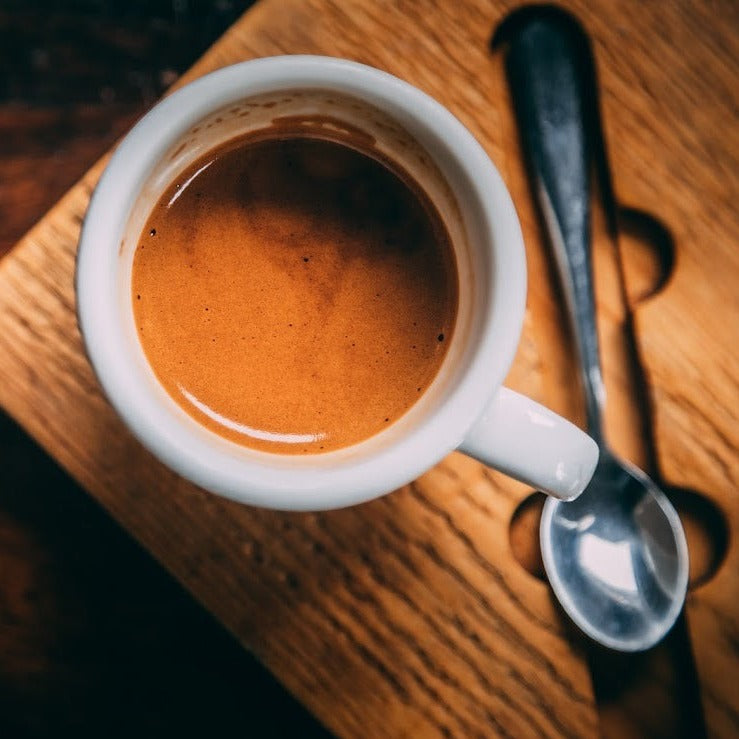Where to Buy Genuine SOE Single Origin Espresso Online
Recognizing Coffee Beans: the Trip From Espresso to Blended Coffee Beans

The Origins of Coffee: A Global Point Of View
While you could think about coffee as a modern-day staple, its origins map back centuries, intertwining with societies around the world. The story starts in Ethiopia, where legend claims a goat herder named Kaldi uncovered the invigorating results of coffee beans after observing his goats romping energetically after consuming them. This sparked interest, leading to coffee's infect Arab traders who cherished the brewed drink. By the 15th century, it got to Persia, Egypt, and Turkey, where coffeehouses became social centers for conversation and society.
As profession courses expanded, coffee made its way to Europe in the 17th century, swiftly obtaining appeal. Each society included its one-of-a-kind spin to coffee preparation, enriching its history.
Farming and Harvesting of Coffee Beans
As coffee's journey advanced, the emphasis shifted to the growing and harvesting of specific bean ranges, particularly those made use of for espresso. You'll locate that espresso beans often originate from Arabica or Robusta plants, each offering distinctive flavors. The suitable expanding problems consist of high elevations and abundant, well-drained soil, which improve the beans' top quality.
Throughout the harvest, picking techniques vary. In some areas, employees hand-pick ripe cherries, guaranteeing only the most effective fruit mosts likely to processing. In other locations, mechanical harvesters are utilized, especially on bigger ranches. Timing is essential; you wish to gather when the cherries reach peak perfection for optimum flavor.
Once gathered, the beans are gotten ready for handling, which is essential in determining their final preference. Recognizing the farming and harvesting procedures offers you understanding right into what enters into your favorite espresso, enhancing your gratitude for each cup.
Processing Approaches: From Cherry to Bean
Now that you have actually learnt more about collecting espresso beans, allow's check out just how those cherries change into the coffee beans you like. You'll see how various harvesting techniques influence flavor, complied with by the necessary steps of fermentation and drying out. We'll break down the milling and grading process that identifies your coffee's quality.
Harvesting Techniques Clarified
When it comes to coffee, recognizing harvesting methods is crucial, considering that they straight impact the taste and quality of the beans you appreciate. Discerning selecting includes hand-picking just ripe cherries, guaranteeing you get the best quality beans. Inevitably, the choice of gathering technique can considerably influence your coffee experience, so it's worth understanding how those beans made it to your cup.
Fermentation and Drying Out
After harvesting, the following actions in processing coffee beans play a considerable duty fit their taste. You'll find that fermentation is important, as it assists damage down the mucilage surrounding the beans, improving their preference account. Depending upon the method, this process can last from a couple of hours to a number of days, with varying results based upon temperature level and moisture.
Sun-drying permits the beans to absorb flavors from the environment, while mechanical drying out warranties consistent wetness degrees no matter of weather. Correct drying out is essential to avoid mold and protect the beans' high quality, eventually affecting your mug of coffee.
Milling and Grading Refine
As fermentation and drying established the phase for flavor growth, the milling and grading procedure guarantees that only the most effective coffee beans make it to your cup. This stage entails getting rid of the external layers of the coffee cherry, consisting of the parchment and husk. After milling, the beans are arranged by size and weight, ensuring a consistent quality. You'll discover that grading aids identify flaws and categorize beans, which affects flavor and scent. Top notch beans receive a higher grade, leading to a richer coffee experience. When rated, the beans await packaging and delivery, preserving their distinct attributes. This careful process is essential for providing the outstanding taste you appreciate in every sip of your preferred brew.
Toasting Strategies: Opening Flavor Potential
When you roast coffee beans, the method you select can dramatically affect the taste account. Recognizing the partnership in between time, temperature, and toasting techniques is key to disclosing the possibility of your brew. Allow's explore just how these aspects integrated to produce the ideal mug.
Toasting Approaches Discussed
While you may assume that all coffee toasting approaches yield the exact same results, the reality is that each strategy reveals special flavor potentials in the beans. Drum roasting utilizes a revolving drum to uniformly disperse warmth, improving caramelization and creating a well balanced flavor. Air roasting, on the other hand, circulates hot air around the beans, advertising a lighter roast with pronounced acidity.

Effect on Taste Account
Different toasting methods not only affect the procedure however also substantially affect the taste account of the coffee beans. Dark roasts, on the other hand, bring out vibrant, smoky tastes, in some cases covering up the bean's unique qualities. Comprehending these subtleties aids you value the artistry behind your cup of coffee, enhancing your overall experience with every sip.
Time and Temperature Level Variables
To launch the complete taste potential of coffee beans, both time and temperature throughout the roasting process play significant functions. When toasting, you'll discover that greater temperatures can swiftly establish tastes, however if you rush it, you could wind up with burnt notes. Conversely, lower temperatures permit for a much more progressive taste growth, showcasing the beans' special characteristics.

Timing is equally as crucial; extending the roast as well long can cause a loss of acidity and illumination, while as well brief a roast may leave the beans underdeveloped. Finding that sweet place requires practice and experimentation. By adjusting these aspects, you see page can reveal the abundant, complicated tastes concealed within each bean, developing an absolutely impressive coffee experience.
The Art of Mixing: Crafting One-of-a-kind Coffee Profiles

Beginning by picking a base coffee that gives a strong foundation. A Recommended Reading bright Ethiopian bean can bring fruitiness, while an abundant Brazilian coffee includes body.
As you blend, bear in mind that each mix narrates. You're not just making coffee; you're creating an experience. Take your time, taste often, and enjoy the trip of finding your trademark mix - Single Origin Espresso.
Brewing Approaches: How Prep Work Influences Taste
Mixing coffee opens up a domain of flavor opportunities, yet how you make that mix can considerably influence your last mug. Various brewing techniques remove distinct tastes and scents, so it's crucial to choose wisely. A French press allows oils and sediments to remain, creating an abundant, full-bodied experience. On the various other hand, a pour-over highlights the coffee's clarity and brightness, best for showcasing fragile notes.
Coffee, with its high stress, generates a focused shot that emphasizes sweet taste and crema. If you favor a lighter mixture, think about a cool brew approach; it generates a smooth, less acidic taste.
Inevitably, testing is vital. Readjusting variables like water temperature, grind size, and make time can change your coffee's account. So, embrace the art of developing to find the tastes concealed in your coffee blends. The right technique can boost your experience to brand-new heights.
The Future of Coffee: Sustainability and Advancement
As the coffee industry evolves, sustainability and technology are becoming essential for attending to environmental obstacles and meeting customer needs. You'll discover that even more coffee business are embracing eco-friendly practices, from sourcing beans morally to applying sustainable farming strategies. These changes not just aid the planet yet additionally improve the quality of the coffee you enjoy.
You could see developments like site link eco-friendly product packaging and water-saving developing techniques that minimize waste. Advanced modern technology, such as blockchain, is likewise coming to be prominent, ensuring transparency in the supply chain, which permits you to trace your coffee back to its origins.
In addition, spending in local neighborhoods and sustaining farmers through fair trade efforts cultivates a more lasting coffee community. As you sip your following cup, keep in mind that your selections can add to a brighter future for coffee. By choosing sustainable brands, you're not just appreciating a drink; you're making a favorable effect on the world.
Frequently Asked Concerns
What Is the Difference Between Arabica and Robusta Beans?
Arabica beans are smoother, sweeter, and have a greater level of acidity, while robusta beans are more powerful, extra bitter, and consist of even more caffeine. You'll discover these differences in flavor and aroma when brewing your coffee.
How Does Altitude Affect Coffee Bean Taste?
Altitude impacts coffee bean taste substantially. Greater altitudes produce beans with brighter level of acidity and complicated tastes, while lower altitudes often produce beans that are much heavier and much less nuanced. You'll discover these differences in your mug!
What Are the Health Conveniences of Drinking Coffee?
Consuming alcohol coffee can boost your power, enhance mental emphasis, and even boost physical performance. It's abundant in anti-oxidants, may decrease the threat of specific illness, and can promote a healthier metabolism when consumed in moderation.
Can Coffee Beans Be Reused for Brewing?
Yes, you can reuse coffee beans for brewing, yet the flavor may be weak. If you delight in trying out, try reusing them in various means, like cold mixtures or including in healthy smoothies for an added kick.
How Should I Store Coffee Beans for Quality?
To keep your coffee beans fresh, keep them in an impermeable container in an awesome, dark area. Avoid revealing them to heat, light, or dampness, as these variables can promptly deteriorate their flavor and aroma.
Comprehending Coffee Beans: the Trip From Espresso to Blended Coffee Beans.
Now that you have actually found out regarding harvesting coffee beans, let's discover exactly how those cherries transform into the coffee beans you enjoy.When you roast coffee beans, the approach you choose can drastically affect the flavor account - Single Origin Espresso.While you might assume that all coffee toasting techniques generate the exact same results, the reality is that each strategy reveals distinct flavor capacities in the beans.Different roasting methods not just affect the procedure yet likewise substantially influence the taste account of the coffee beans